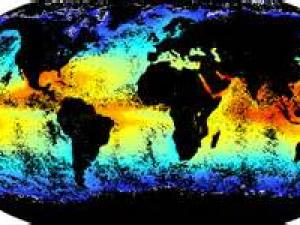Jan 27 2015
A new Duke University-led study finds that most climate models likely underestimate the degree of decade-to-decade variability occurring in mean surface temperatures as Earth’s atmosphere warms. The models also provide inconsistent explanations of why this variability occurs in the first place.
 Photo credit: NOAA
Photo credit: NOAA
These discrepancies may undermine the models’ reliability for projecting the short-term pace as well as the extent of future warming, the study’s authors warn. As such, we shouldn’t over-interpret recent temperature trends.
“The inconsistencies we found among the models are a reality check showing we may not know as much as we thought we did,” said lead author Patrick T. Brown, a Ph.D. student in climatology at Duke’s Nicholas School of the Environment.
“This doesn’t mean greenhouse gases aren’t causing Earth’s atmosphere to warm up in the long run,” Brown emphasized. “It just means the road to a warmer world may be bumpier and less predictable, with more decade-to-decade temperature wiggles than expected. If you’re worried about climate change in 2100, don’t over-interpret short-term trends. Don’t assume that the reduced rate of global warming over the last 10 years foreshadows what the climate will be like in 50 or 100 years.”
Brown and his colleagues published their findings this month in the peer-reviewed Journal of Geophysical Research.
To conduct their study, they analyzed 34 climate models used by the Intergovernmental Panel on Climate Change (IPCC) in its fifth and most recent assessment report, finalized last November.
The analysis found good consistency among the 34 models explaining the causes of year-to-year temperature wiggles, Brown noted. The inconsistencies existed only in terms of the model’s ability to explain decade-to-decade variability, such as why global mean surface temperatures warmed quickly during the 1980s and 1990s, but have remained relatively stable since then.
“When you look at the 34 models used in the IPCC report, many give different answers about what is causing this decade-to-decade variability,” he said. “Some models point to the Pacific Decadal Oscillation as the cause. Other models point to other causes. It’s hard to know which is right and which is wrong.”
Hopefully, as the models become more sophisticated, they will coalesce around one answer, Brown said.
Co-authors on the new study were Wenhong Li of Duke’s Nicholas School, and Shang-Ping Xie of the Scripps Institution of Oceanography at the University of California San Diego.
Partial funding was provided through a National Science Foundation grant (#AGS-1147608).